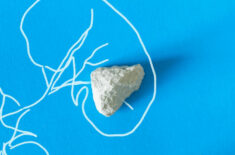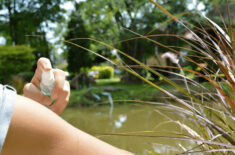Essential Oils & Soapmaking
Essential oils are highly concentrated plant extracts containing hundreds of active chemicals known to improve health and wellbeing.
Aromatherapy refers to the therapeutic use of essential oils for healing purposes.
Essential oils are added to multiple skin care products such as lotions, face oils, bath bombs, and even soapmakers love using these healing oils in their creations.
You’re about to learn how to make your own soap in under five minutes with one of our favorite recipes below.
Traditional soapmaking often involves what’s called cold process soap (cp soap).
This type of soap is made by mixing oils like argan oil and olive oil with sodium hydroxide lye.
Lye is a strong chemical that’s not always safe to handle.
Protective eyewear and latex gloves are often needed, along with long sleeves and a very well-ventilated area to protect yourself.
The process of combing lye with oils creates a chemical reaction referred to as saponification.
If you’re not into handling strong chemicals for making soap bars, or you want a quicker, easier, and simpler approach to soap making, we got you covered.
Essential Oils vs. Fragrance Oils
Essential oils are 100% naturally derived extracts sourced from plant leaves, stems, roots, fruits, flowers, nuts, or tree bark and resin.
Fragrance oils are synthetic and created by combining chemicals with natural extracts or essential oils.
The Best Essential Oils For Natural Soap Making
Top Notes
Peppermint
Spearmint
Lavender
Lemongrass
Lemon essential oil
Lime
Bergamot
Grapefruit
Sweet orange
Middle Notes
Rosemary
Tea tree
Ylang ylang
Chamomile
Clary sage
Geranium
Nutmeg
Litsea cubeba
Base Notes
Cedarwood
Patchouli
Frankincense
Vetiver
Sandalwood
Safety Concerns
Always dilute essential oils in a carrier oil like coconut oil or olive oil, or even water before using them directly on your skin.
If you’re going to use citrus essential oils, be sure to avoid direct sunlight exposure, as these oils have a phototoxic effect and can cause discoloration or irritation.
Always choose 100% pure essential oils that are preferably organic and non-diluted with synthetic chemicals.
It’s easy to get essential oils on places like Amazon these days, so do your due diligence and research each brand of essential oil before buying to make sure they practice acceptable safety standards.
Remember, essential oils are very potent, and a little goes a long way.
You only need a small amount of essential oils to reap maximum benefits.
A DIY Essential Oil Blend & Quick Handmade Soap Recipe
If you’re after a no-fuss soapmaking process, here’s an option for you:
Hand Soap
We’ll be using Castile soap as the soap base.
Castile soap is a safe and eco-friendly option.
It’s also non-toxic, 100% natural, and biodegradable.
What you’ll need:
- ½ cup castile soap
- 2 cups of water
- Five drops of Vitamin E oil
- 15 drops of lavender essential oil
- 15 drops of clary sage essential oil
- 15 drops of vetiver essential oil
Directions:
- Pour soap into a glass bowl with the water and mix.
- Add the essential oils to the mixture and mix all ingredients.
- Place in a dark glass or non-BPA soap dispenser












